| Year-round Resident | |
| Has Nested in Park |
Spring: Red-shouldered Hawks are year-round residents of the Washington metro area who have nested at Monticello Park and in the surrounding neighborhood. You might see them at any time during the spring, but there are never a lot of them around the park.
Fall: Red-shouldered Hawks are not encountered as often in the fall as in the spring. The likelihood of seeing one might depend on whether they nested in or near the park that year.
Where to See Them in the Park
Red-shouldered Hawks often soar over Monticello, and some perch in trees in or near the park. Sometimes, when a flock of crows becomes very loud, they are harassing either a perched or a flying Red-shouldered Hawk.
Physical Description
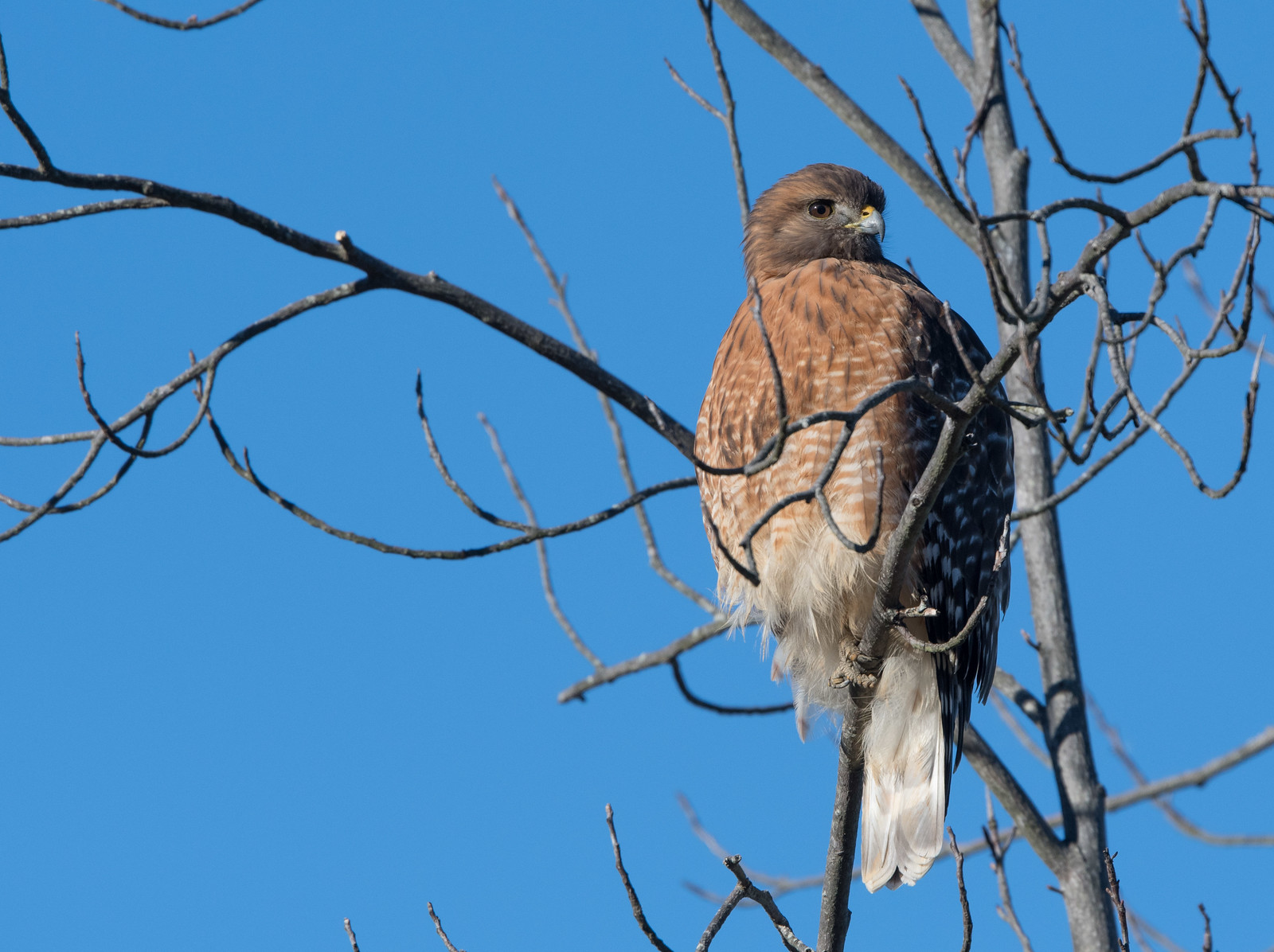
Adult Red-shouldered Hawks have an orange-brown body.
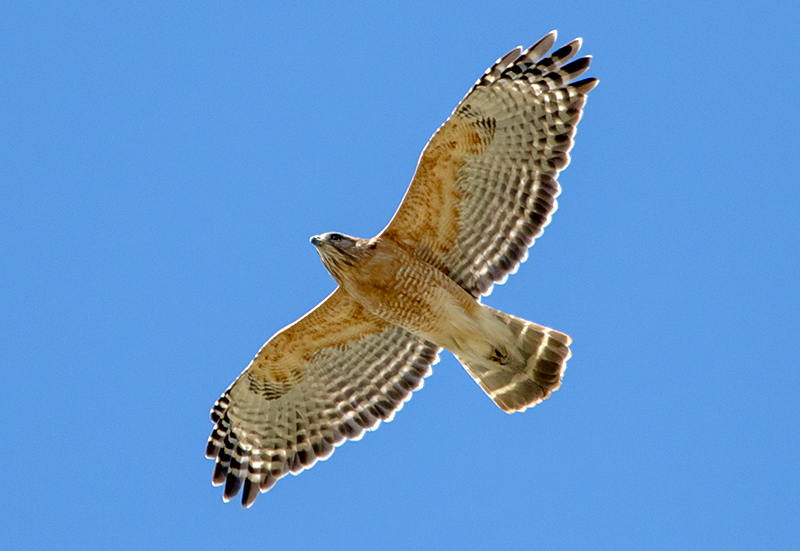
They also have orange-brown on their shoulders, underwings, and leggings. The tail is black with white bands. The underwings have black-and-white barring. Near the tip of the wing, the white feathering is somewhat brighter. The sexes are similar.
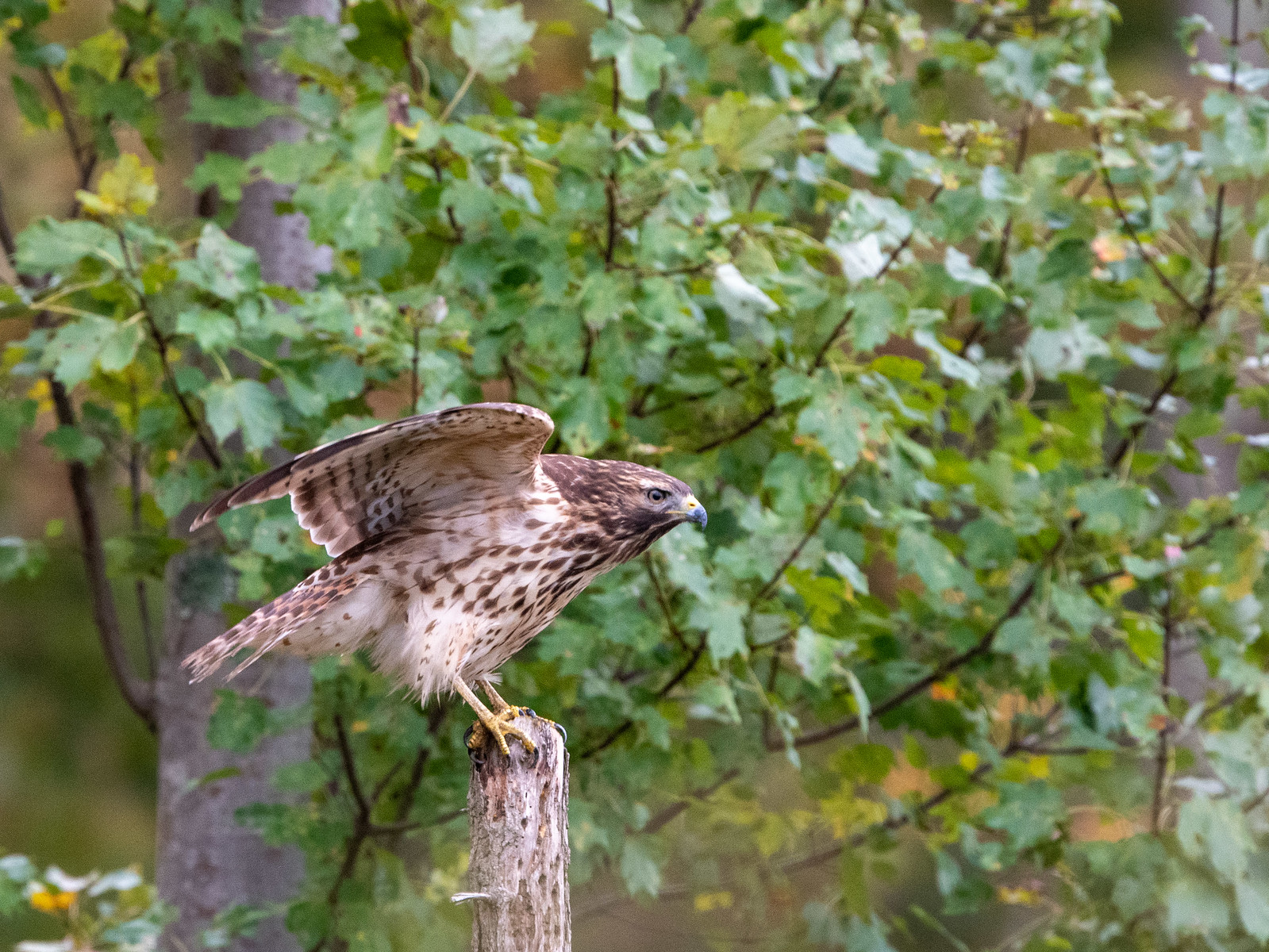

In flight, the white feathers near the tip of the wing form a translucent crescent. These crescents usually can be seen on a soaring bird, and they can be an important fieldmark for identifying juvenile Red-shouldered Hawks. As with other hawks in the Buteo genus, the juveniles are much more difficult to identify than the adults. Juvenile Red-shouldered Hawks are smaller than the Red-tailed Hawk and larger than the Broad-winged Hawk. They have streaking that extends from the throat to the belly like a juvenile Broad-wing, but their wings are broader and less pointed. The only streaking on a juvenile Red-tail is on the belly band, and Red-tails do not have translucent crescents in their wings.
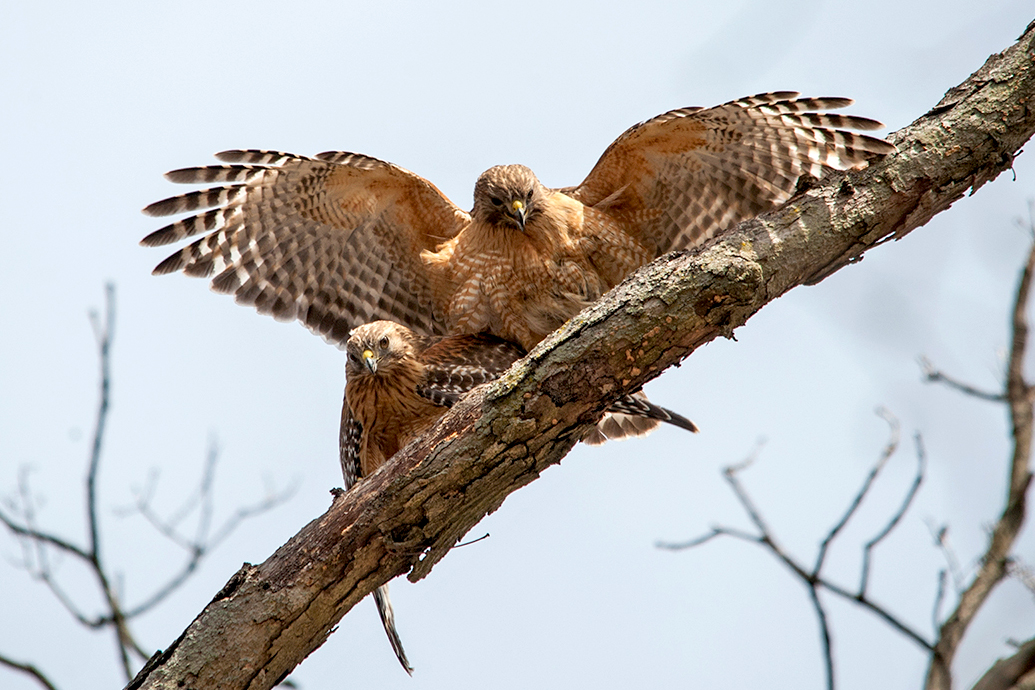
Around the beginning of April, nesting Red-shouldered Hawks become more active near the park. A nesting pair will soar together and dive toward one another. The male will sometimes perform a sky-dance, which involves ascending in a spiral and then doing a steep dive. You could see a pair copulating, which they do frequently at the beginning of the breeding period.
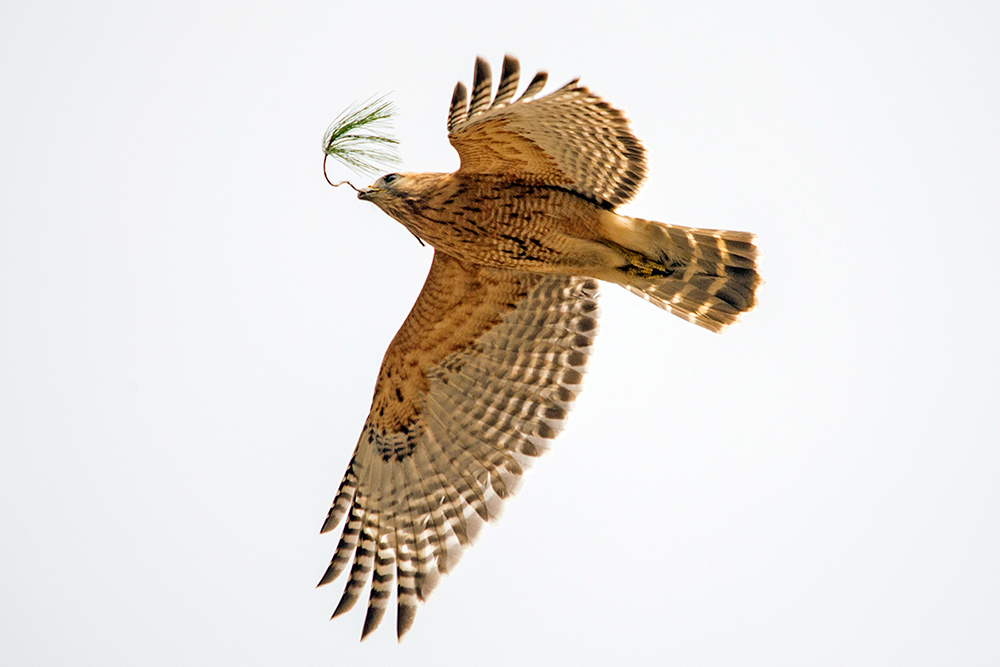
Red-shouldered Hawks nest in forests, and both members of the pair participate in nest building. They build a large nest from sticks, leaves, twigs, and other materials, and they sometimes will re-use a nest from a previous year. They often return to the same nest site in subsequent years.
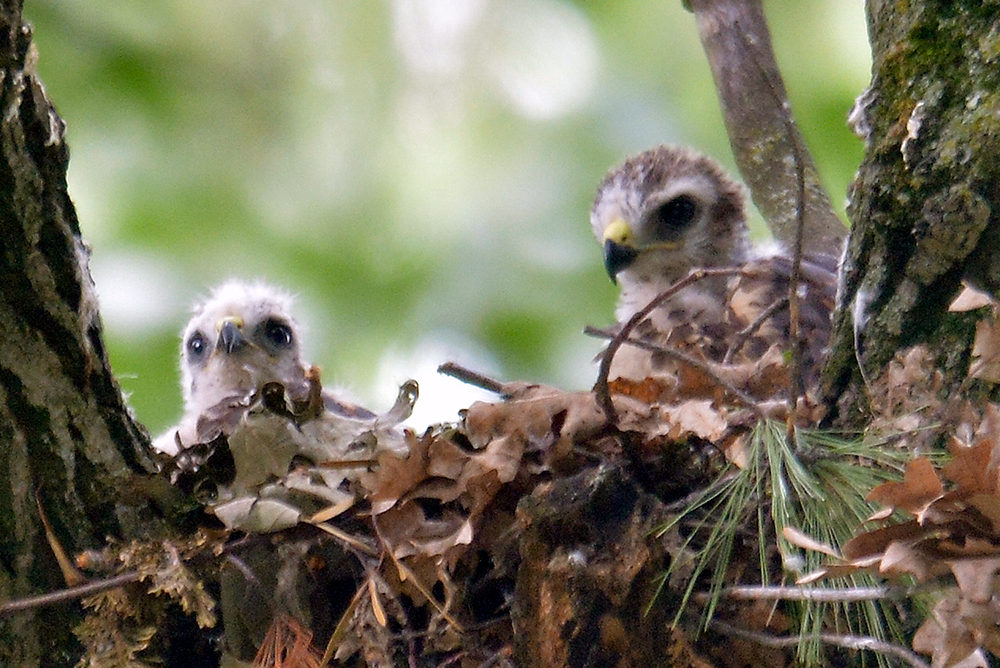
They lay 3 or 4 eggs which are incubated for 33 days by both the male and the female. The eggs do not hatch at the same time. Once they hatch, the female will do most of the brooding of the young during the first week, and the male will bring food to her and the nestlings. The chicks stay in the nest for about 6 weeks. Once they leave, they continue to be fed by the parents and do not become fully independent until they are between 4 and 5 months old. When Red-shouldered Hawks are nesting at or near the park, you can observe them long after the end of the spring songbird migration.
Vocalizations
The call of the Red-shouldered Hawk is a loud, clear kee-ah, delivered multiple times in succession. It does not have the raspy quality of the Red-tailed Hawk's call. You should be careful about trying to identify a Red-shouldered Hawk by the call alone, because Blue Jays frequently imitate it.
Hear the calls of the Red-shouldered Hawk.
Notes
Red-shouldered Hawks have a varied diet. They eat small mammals, small birds, snakes, lizards, and amphibians. They have sometimes been shot by farmers for attacking chickens. They had problems in the past caused by DDT and other pesticides. The biggest current threat to their population is habitat loss from deforestation.
Origin of Names
Common Names: Red-shouldered from their plumage. Hawk from an Anglo-Saxon word that means seize.
Genus Name: Buteo means hawk.
Species Name: Lineatus means striped, probably from the wings of the adult.
Red-shouldered Hawk video footage
Return to the Index
